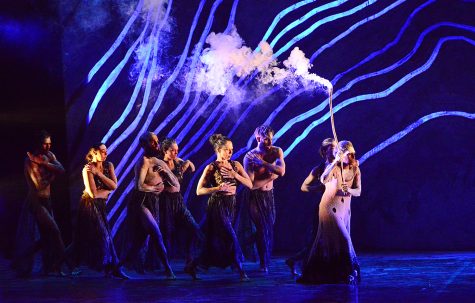Bangarra Dance Theatre brings 65,000 years of indigenous Australian peoples’ culture to Chicago
November 26, 2019

Raised on Thursday Island of the Torres Strait, Elma Kris has been dancing with the Bangarra Dance Theatre for two decades and exemplifies the theatre’s mission of sharing 65,000 years of Australian indigenous culture through contemporary dance.
Kris left Thursday Island to pursue her dreams of becoming a visual artist on the mainland of Australia but needed her parents permission to do so.
“[My mother said,] ‘Always come back, otherwise, you might forget me,’” Kris said.
Headquartered in Barangaroo, a suburb of Sydney, Australia, the theatre only employs dancers with indigenous or Torres Strait Islander background. The central theme of the company is “to make fire” with performance, which is the translation of the Wiradjuri term “Bangarra.”
“This is my footprint. … This is where I come from,” Kris said, referring to her reason for joining the Bangarra Dance Theatre in 1999. Kris spoke at a panel on Tuesday, Nov. 19 to discus the Bangarra Dance Theatre’s role in representing and passing down indigenous peoples’ history. The panel was sponsored by the Harris Theatre for Music and Dance and the Field Museum.
It was not until Kris watched a performance from the Bangarra Theatre, which fused contemporary dance with cultural heritage, that she realized she did not have to do ballet to be a part of a cultural movement.
Bangarra’s Artistic Director Stephen Page said his ancestors came from a generation that held itself to protecting and preserving their culture. However, growing up he said he had limited knowledge about indigenous peoples’ culture because his school did not teach their heritage after being colonized by the British.

When he went to college, Page said he was surprised that he learned not only American dance techniques but also Torres Straight techniques—where the northern regions of Australia would “rejuvenate” the culture of the southern region because the North did not lose as much of its culture during colonization.
The Field Museum does not have anything on display from Australia in the Regenstein Halls of the Pacific because when it was created in the late 1980s and also because the museum considered Australia too big to be an island, said Field Museum Regenstein Curator of Pacific Anthropology John Terrell.
He said the museum needs to start co-curating collections from all heritages or else people’s history will cease to exist since there will not be anything to show for them.
Inspiration for the Bangarra Theatre’s performances come from integrating “empowering” stories from various indigenous communities, Page said.
The Chicago performances ran from Nov. 22 to Nov. 23 at the Harris Theater for Music and Dance, 205 E. Randolph St., and will stage two of Page’s choreographies, “Spirit” and “Nyapanyapa.”
“Spirit” is a blend of short stories celebrating the theatre’s 30-year history and “Nyapanyapa” interprets the bark paintings of Yirrkala artist Nyapanyapa Yunupingu.
As for Kris, the company has taught her to lead in revitalizing her communities’ stories while still preserving its history before it is lost, she said.
“This is you,” Kris said, speaking of her homeland. “You must never forget where you come from.”







